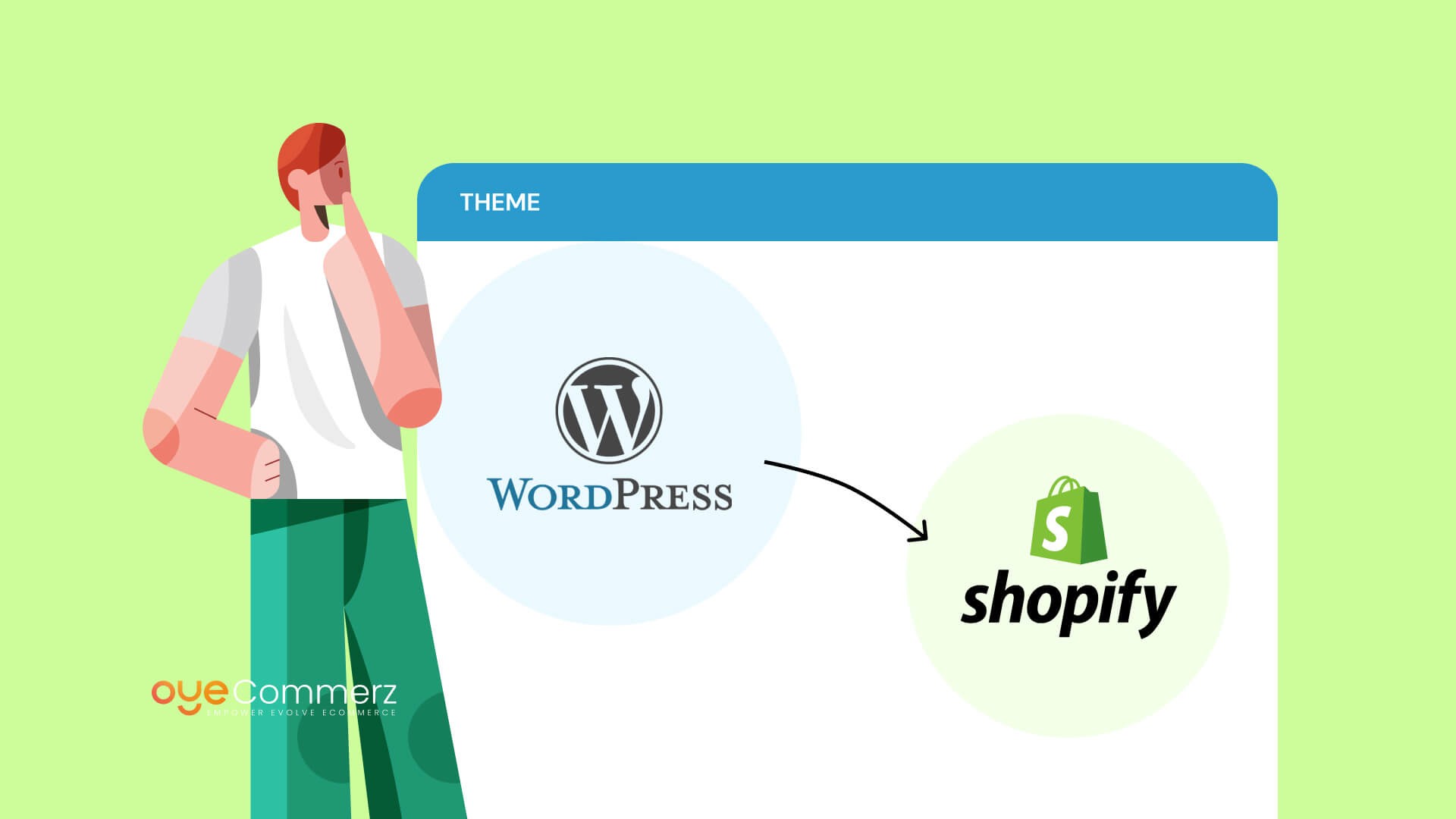Transitioning from WordPress to Shopify is an exciting step toward optimizing your online store operations. As businesses expand, choosing a solution that aligns with growth potential, UX, and flexibility is essential. Shopify has emerged as a preferred choice for e-commerce professionals, providing superior flexibility, data protection, and ease of use. In this guide, we will delve into the transformative impact of this migration, highlight the benefits, and provide actionable steps to ensure a seamless move.
1. Why Switch from WP to Shopify?
The combination of WordPress and WooCommerce, continues to support countless online stores. However, as companies scale, issues like reliance on plugins, data risks, and complex setups often obstruct progress. Shopify, designed explicitly for digital retail, eliminates these issues with an comprehensive, user-friendly platform. Statistics back this transition—Shopify hosts over 4.4 million stores globally, with a documented 10% boost to sales conversion rates for numerous merchants after migration.
2. Shopify's Advantages for Thriving Online Stores
Shopify’s robust ecosystem is tailored for scaling brands. Its notable features are:
- Effortless Design Flexibility: Shopify offers over 80 professionally designed themes.
- Integrated Tools: Capabilities such as Shopify Payments and built-in SEO save time and effort.
- International Expansion: Multi-currency support and regional customization enable brands to reach global markets.
Additionally, Shopify boasts an availability percentage of 99.98%, guaranteeing your store remains accessible.
3. Preparing for WP to Shopify Migration
Before migrating, evaluate your existing setup. Analyze product data, client information, and SEO performance. Tools like Shopify’s Migration Kit or third-party solutions help ease the transition. Create a detailed strategy, ensuring all resources—product descriptions, images, and articles—are optimized for transfer.
4. Data Migration: A Critical Step
Data migration forms the foundation for a smooth platform switch. When moving from WordPress to Shopify, prioritize:
- Inventory Details: SKU, descriptions, and groupings.
- Customer Data: Emails, order history, and preferences.
- Search Engine Considerations: Retain meta tags, URLs, and redirects to maintain search rankings.
Use tools such as LitExtension to streamline data transfer while minimizing errors.
5. Tailoring Your Shopify Store to Fit Your Brand
Post-migration, personalizing your Shopify store helps it aligns with your brand. Utilize Shopify’s intuitive page builder to create layouts with ease. Shopify's templates are optimized for all devices, ensuring a smooth UX across devices—a critical factor, since 74% of e-commerce traffic is generated by mobile users.
6. Maintaining SEO During Migration
Search engine optimization is crucial for preserving your visibility during migration. Shopify is highly optimized for search engines with clean URL structures, built-in optimization tools, and smooth content management. Ensure:
- Set up URL forwarding for existing links.
- Enhance updated content with targeted phrases.
- Leverage plugins like Plug in SEO to track analytics after the switch.
7. Essential Tests After Migrating to Shopify
After finishing the transfer, run detailed checks.
Review:- Website speed (Shopify delivers faster speeds in contrast with WordPress).
- Functionality of payment gateways and checkout processes.
- Migrating online stores to Shopify Adaptability across devices.
Quality assurance guarantees your store delivers a smooth shopping journey from day one.
8. Real-Life Success Story
An example of effective platform switching is Gymshark, a sportswear company that transitioned to Shopify. Post-migration, the company Shopify vs WooCommerce pros and cons saw a 60% boost in mobile sales and reduced site downtime. This highlights the capabilities of Shopify in driving online business success.
9. Challenges and Solutions
Migration comes with challenges, such as data integrity and adjusting tailored features. However, Shopify’s extensive assistance and third-party experts make overcoming these hurdles manageable. Collaborating with experienced Shopify developers helps guarantee a smooth transition.
10. Making the Switch: The First Step Toward Success
Switching from WordPress to Shopify represents a strategic decision to e-commerce. By focusing on growth, streamlining operations, and improving buyer satisfaction, Shopify empowers businesses to thrive in competitive markets.
Final Thoughts
Switching from WordPress to Shopify is a strategic move that can significantly boost your online business performance. With a robust migration plan, the right tools, and expert support, you can achieve new growth opportunities.
Ready to make the leap? Let’s discuss how our Shopify migration services can transform your online store. Get in touch today, or ask yourself: Can your business afford to miss out on Shopify’s growth potential?

Comments on “Effortless Transition from WordPress to Shopify: A Comprehensive Roadmap for E-commerce Growth”